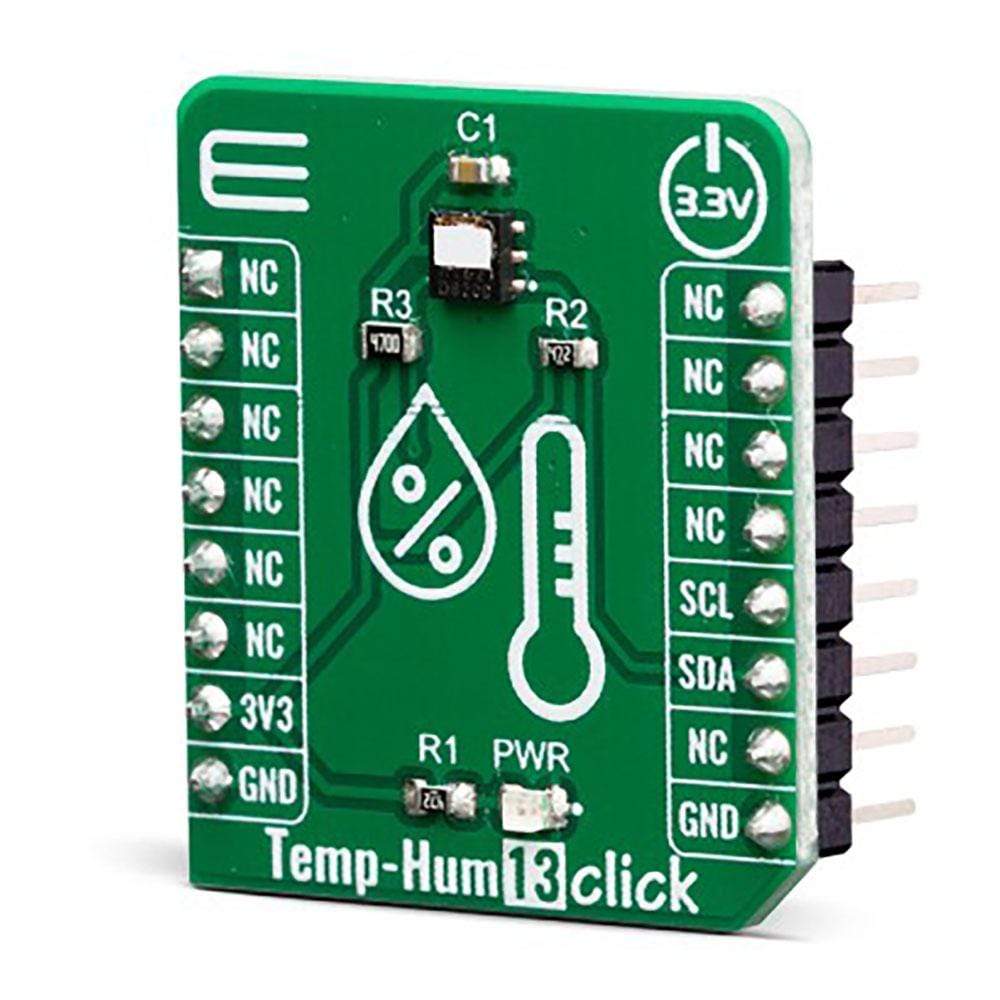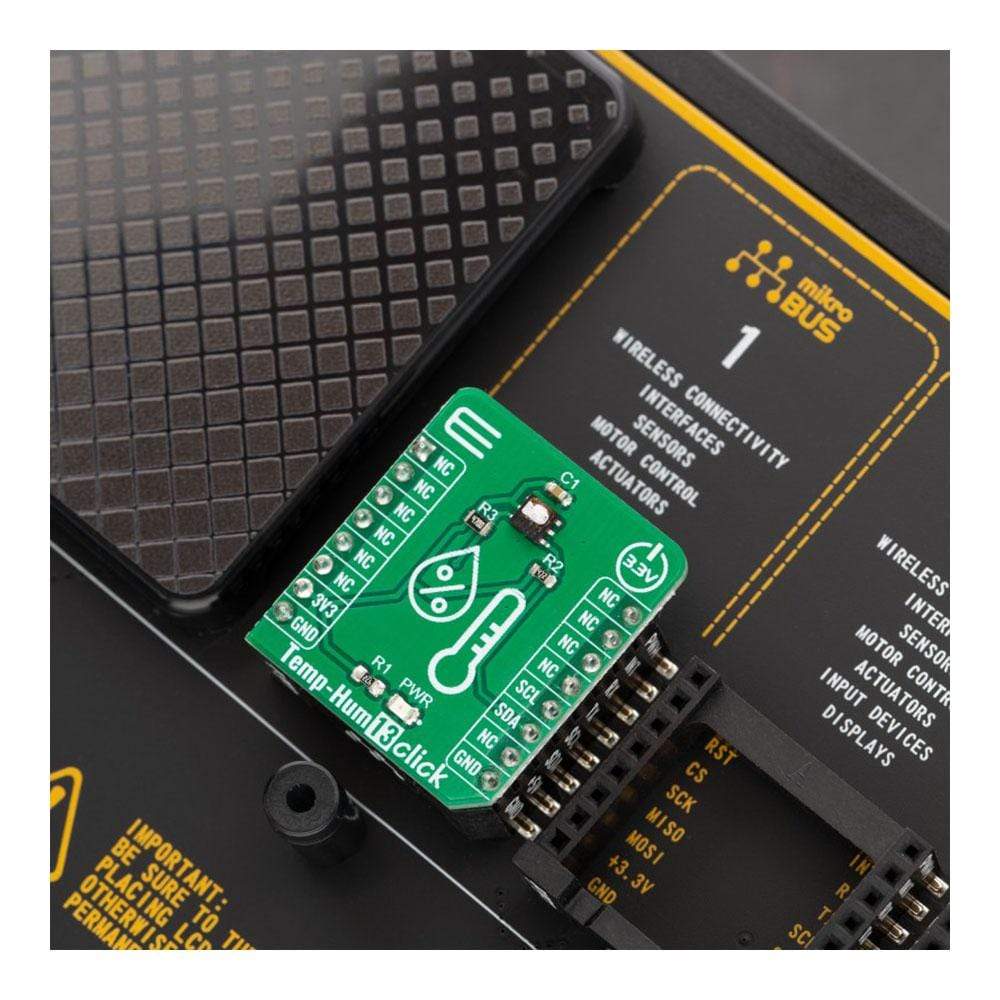



Overview
The Temp&Hum 13 Click Board™ is a Click Board™ which is perfectly suited for measuring the relative humidity (RH) and temperature. The Click Board™ is equipped with the HTU21DF, an accurate and reliable sensor IC, packed in a miniature 3x3mm DFN package.
This sensor is fully calibrated and features fast response time, low power consumption, full interchangeability with no calibration required, instantaneous desaturation after long periods in saturation phase and many more. This Click Board™ can be used for the development of the many different relative humidity and temperature measuring applications, including weather stations, reliable monitoring systems, asset tracking, HVAC/R based applications, and more.
Downloads
Das Temp&Hum 13 Click Board™ ist ein Click Board™, das sich perfekt zum Messen der relativen Luftfeuchtigkeit (RH) und Temperatur eignet. Das Click Board™ ist mit dem HTU21DF ausgestattet, einem genauen und zuverlässigen Sensor-IC, verpackt in einem Miniatur-DFN-Gehäuse von 3 x 3 mm.
Dieser Sensor ist vollständig kalibriert und bietet eine schnelle Reaktionszeit, einen niedrigen Stromverbrauch, vollständige Austauschbarkeit ohne erforderliche Kalibrierung, sofortige Entsättigung nach langen Zeiträumen in der Sättigungsphase und vieles mehr. Dieses Click Board™ kann für die Entwicklung vieler verschiedener Anwendungen zur Messung der relativen Luftfeuchtigkeit und Temperatur verwendet werden, einschließlich Wetterstationen, zuverlässiger Überwachungssysteme, Anlagenverfolgung, HVAC/R-basierter Anwendungen und mehr.
| General Information | |
|---|---|
Part Number (SKU) |
MIKROE-3635
|
Manufacturer |
|
| Physical and Mechanical | |
Weight |
0.017 kg
|
| Other | |
Country of Origin |
|
HS Code Customs Tariff code
|
|
EAN |
8606018716289
|
Warranty |
|
Frequently Asked Questions
Have a Question?
Be the first to ask a question about this.




